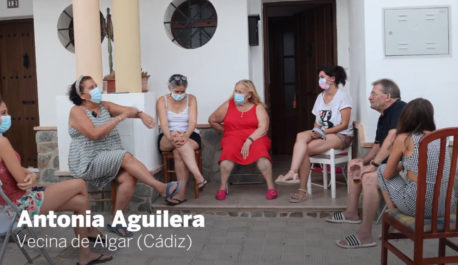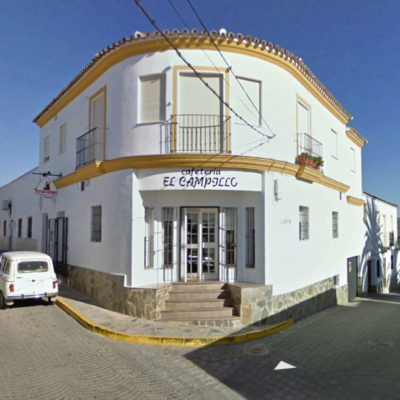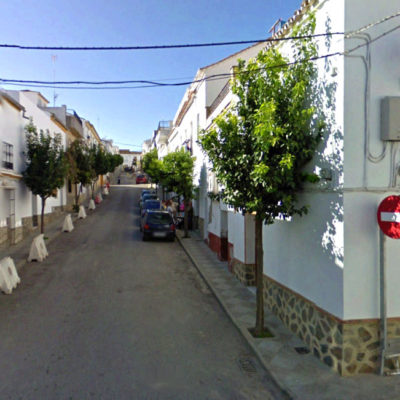
Mayor Sánchez says the town is the talk in the street
The small rural village he serves is seeking UNESCO recognition for their pastime of retiring to the street to chat with neighbors. In the hot months, the streets fill with chairs as inhabitants abandon their traditional (stifling) salons to enjoy the early evening breezes. Beyond saving on electricity, the social engagement galvanizes community inter-reliance as they share their woe, joys, and opinions with one another.
“My mother is 82 and sits on her street every day. There are days when I pass by after work, sit down and we catch up. It’s the most beautiful moment of the day.”
“Residents come out onto the street and instead of feeling that they’re alone, what they get is a therapy session. They share their stories or the problems they’re going through and the neighbors try and help.”

Rural communities lend meaning to the cities
Algar, Spain (Province of Cádiz), is a rural village that follows the same pattern of population decline of many rural communities. In the last twenty-five years Algar has lost twenty-five percent of its population. The municipality of Cádiz grew it population by twelve percent over the same period. The cultural diversity of these regions fade as the draw of urban life continues to depopulate the hinterlands.

Is talk on the street an intangible cultural heritage?
The United Nations Educational, Scientific and Cultural Organization (UNESCO) has specific criteria for local rituals to be recognized:
“The importance of intangible cultural heritage is not the cultural manifestation itself but rather the wealth of knowledge and skills that is transmitted through it from one generation to the next… It contributes to social cohesion, encouraging a sense of identity and responsibility which helps individuals to feel part of one or different communities and to feel part of society at large.”
link to UNESCO, Intangible Cultural Heritage, (accessed on 020210819)

Sense of place
is reasonably easy to quantify
Our senses have a place
Sense of place is assumed to be ephemeral or an intangible experience. Often is is given only poetic treatment by scholars, tourism boards, and developers. If we explore the terms sense and place we can come to a convenient definition of sense of place.
First, things (objects) must be sensible by the five senses routinely over the time scale of a year. Hence regional food that is seasonally dependent is a strong contributor to the sense of tasting and smelling a place. That same sense of natural seasonal smell is also is part of the bouquet of a place, be it the spring rains or sear fall leaves. Seasonal animal calls can be added to sense of ambient sounds of a place. Limiting the menu to only these items, clearly their combination will create an ambiance unique place-by-place.
Our memories have a place
To make something a place which can be sensed, there is a required intentionality by some actors. Place is not the same as space. Space is the definition of an absence into which energy or things are added. A place is a space that has yielded to the emplacement of energy or things. Something has to be emplaced routinely to convert a space to a place. To say this simply: things have to happen in a space over and over for it to become a place.
Natural settings can give rise to a sense of place in our minds if we ourselves routinely visit that natural space. We are adding our own energy to visit the natural setting, and a sense of place arises in our own memories. To do so adds that natural setting to our domain, it stores our memories for us.
Home as a stage
A cultural setting, such as a neighborhood or village, has a cast of characters who inhabit that space. The inhabitants routinely emplace their energy and things into that space. Their sense of domain over the space is reified daily, seasonally, religiously, gastronomically, and so on—and they will quite reasonably refer to it as home. All of these rituals of reification need to be practiced in the space, to be emplaced, so that the “sense of the place” manifests. The sense of place cannot be recorded in a book or video or artificial media.
Sans sensation, there is no sensing.
Sans live actors, there is no emplacement—only history.

“All the world is a stage
And all the men and women merely players”
As You Like It, Act II Scene VII Line 139, William Shakespeare
Appearing to our senses
Melancholy Jaques’ monolog from the play clearly describes the requirement of appearing in public to be a polis. Stepping onto the stage of community life is to invest your energy in the space, and those you share it with. Political thinker Hannah Arendt describes this prerequisite simply as appearing, demonstrating yourself in public to take a certain ownership of the common emplaced structure of the city (Arendt, Life of the Mind, Book one: Thinking; 1978). Like all actors, the inhabitants of a town emplace their story for others; though the story is evolving over the years. Regardless of the evolution of the stories, they are continuous.
Living Stories are not History
Do not confuse their stories with history as that would remove the potential to share in the sensory experiences. The sense of place arises as a contemporaneous experience of the stories being told with the literal sense perceptions specific to that location. The continuity of the senses and stories over time manifests the emplacement, the domain. Actual stones will be placed to shape gardens and homes based on the combination of stories and sensory experience. Remove the sensory experiences (as dead media or social media will) or the actors’ stories (as depopulation will) and continuity is broken. The emplaced culture is then lost forever.
Using community chats
as infrastructure to plan the future
The citizens of Algar share this use of the street with many communities across Spain and around the world. Famagusta, Cyprus, similarly takes to the summer evening’s streets of the old town by ones and threes. While acknowledging the necessity of being present, Famagustians have begun to experiment with capturing the stories on a map. While the cultural practice of sharing time together is irreplaceable, the value of the telling of stories has been amplified by mapping those stories of daily life. The stories are in fact a vital resource not for simply remembering the past, but for planning for the community’s future.
By emplacing the stories of the community, and demonstrating how stories overlap one another, the narrative infrastructure of Famagusta does a variety of interesting jobs for the community:
RELY
BUILD
But developers can now review the local memories to sift for meaningful ways to shape economic projects.
VISIT
Visitors and new villagers can quickly familiarize themselves with the fabric of stories that hold the community together.
POLICY
Politicians have a greater sense of the meaning of each street corner.
All the world is a stage, but that stage is there to host our stories
In support of the UNESCO application, Algar should map their stories. This manifestation of the intangible heritage to provide depth to the sense of place converts a quaint practice into a civic duty. A villager’s stories explain how and why things are meaningful in a community. Those stories can then influence the future development, making the future full of meaning.

When we map our stories the intangible heritage can shape our tangible future.
Credits
This story is based upon the article by The Guardian, Ashifa Kassam, Sun 8 Aug 2021 12.46 BST @ashifa_k
Imagery here attached is the property of the City of Algar, Google Earth, and El Pais

